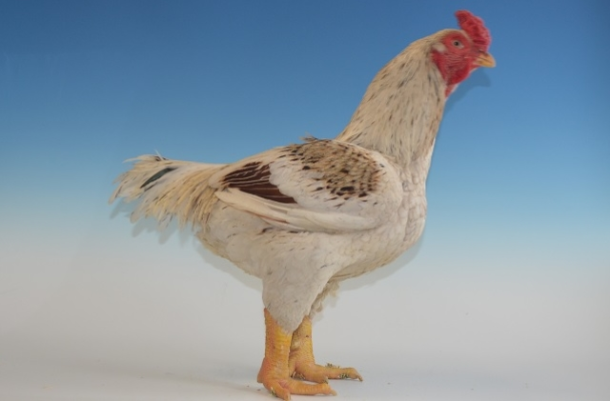JUBILEE INDIAN GAME
Same as Indian Game
Male Plumage:
Head, neck, breast, body, under-fluff, thighs and tail white. Hackle feathers to have chestnut shafting’s. Clear breasts are desirable. Wings bows and shoulders white, slightly broken with bay or chestnut, wing primaries and secondary’s white with bay markings, triangular patch of bay or chestnut to show when wing is closed. Tail coverts white. Back white touched with bay or chestnut.
Female Plumage:
Ground colour chestnut-brown or mahogany. Head hackle and throat white. Breast, commencing on the lower part of the throat and expanding to double lacing on the swell of the breast, mahogany laced with white. The inner, or double lacing, to be most distinct. The under-parts and thighs are marked somewhat similarly and run into a mixture of indistinct markings beneath the vent and swell of the thighs. Feathers of the shoulders and back somewhat small, enlarging towards the tail coverts similarly marked with the double lacing, often in the best specimens there is an additional mark enclosing the base of the shaft of the feather and running to a point in the second or inner lacing.
The tail coverts are seldom as distinctly marked, but with the same style of marking. Wing primaries, white marked on inner web with chestnut, secondary’s, white inner web, chestnut outer web, edged with white. Main tail white. Remainder chestnut ground colour throughout, double laced with white, inner lacing should be quite distinct. Under-parts and thighs may be less distinctly marked and wing coverts (the upperwing-coverts fall into two groups, those on the inner wing, which overlay the secondary flight feathers, known as the secondary-coverts, and those on the outerwing, which overlay the primary flight feathers, the primary-coverts.) may be peppered. In all other respects the Indian Game standard should be followed.
In both sexes:
Beak, eyes, comb and legs as described for Indians.
